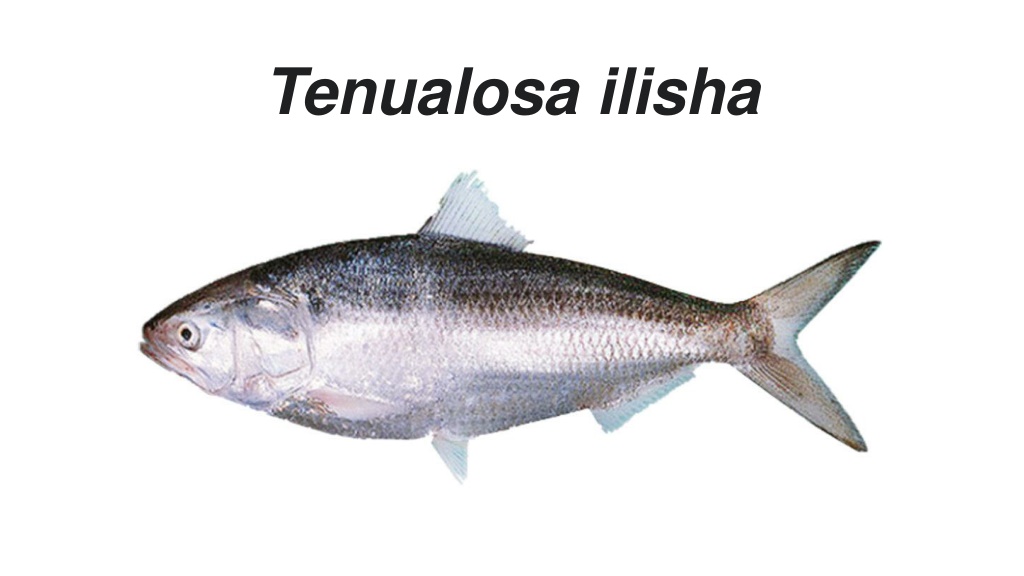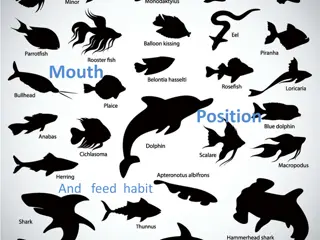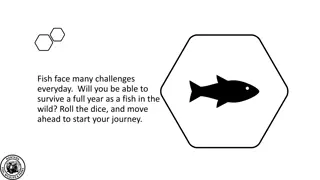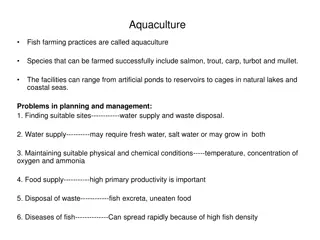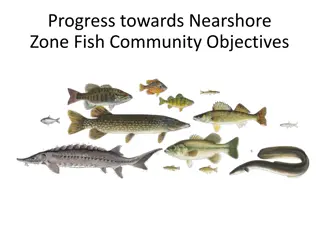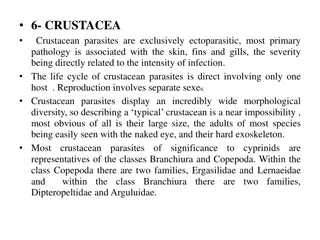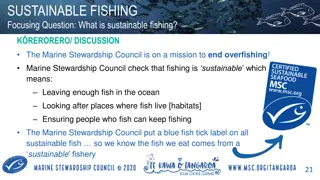All You Need to Know About Hilsa Fish
Hilsa herring, also known as Hilsa shad, is a sought-after food fish in the Indian Subcontinent, particularly in Bangladesh, India, and West Bengal. This marine species belongs to the herring family, Clupeidae, and can grow up to 60cm in length. It is an anadromous fish, schooling in coastal waters and ascending rivers to spawn. The fish feeds on plankton and has distinctive characteristics like no dorsal spines and a dark blotch behind the gill opening. Learn more about the life cycle and significance of this popular fish.
Download Presentation

Please find below an Image/Link to download the presentation.
The content on the website is provided AS IS for your information and personal use only. It may not be sold, licensed, or shared on other websites without obtaining consent from the author. Download presentation by click this link. If you encounter any issues during the download, it is possible that the publisher has removed the file from their server.
E N D
Presentation Transcript
Hilsa herring or Hilsa shad, is a species of fish related to the herring, in the family Clupeidae. It is a very popular and sought-after food fish in the Indian Subcontinent and the state fish of West Bengal. The fish is marine; freshwater; brackish; pelagic-neritic; anadromous; depth range - 200 m. Within a tropical range; 34 N - 5 N, 42 E - 97 E in marine and freshwater. It can grow up to 60 cm in length with weights of up to 3 kg. It is found in rivers and estuaries in Bangladesh, India, Pakistan, Myanmar, etc.
It has no dorsal spines but 18 21 dorsal soft rays and anal soft rays. The belly has 30 to 33 scutes. There is a distinct median notch in the upper jaw. Gill rakers are fine and numerous, about 100 to 250 on the lower part of the arch and the fins are hyaline. The fish shows a dark blotch behind the gill opening, followed by a series of small spots along the flank in juveniles. Color in life, silver shot with gold and purple. The species filter feeds on plankton and by grubbing muddy bottoms.
Life Cycle of Life Cycle of Hilsha Hilsha ilisha ilisha
The fish schools in coastal waters and ascends up the rivers (anadromous) for around 50 100 km to spawn during the southwest monsoons (June to September) and also in January to April. April is the most fertile month for the breeding of ilish. The young fish returning to the sea are known in Bangladesh as jatka, which includes any ilish fish up to 9 inches long.
